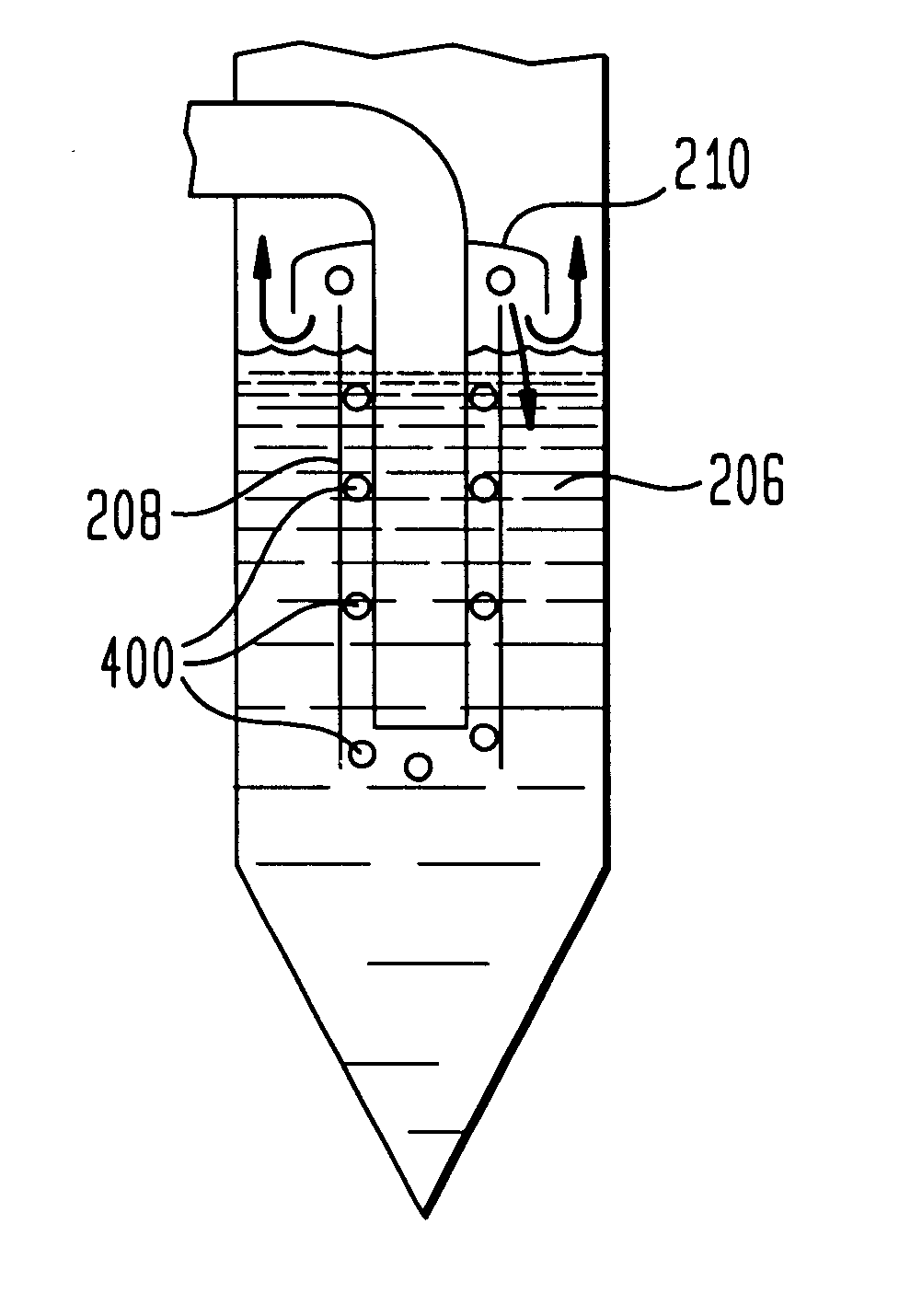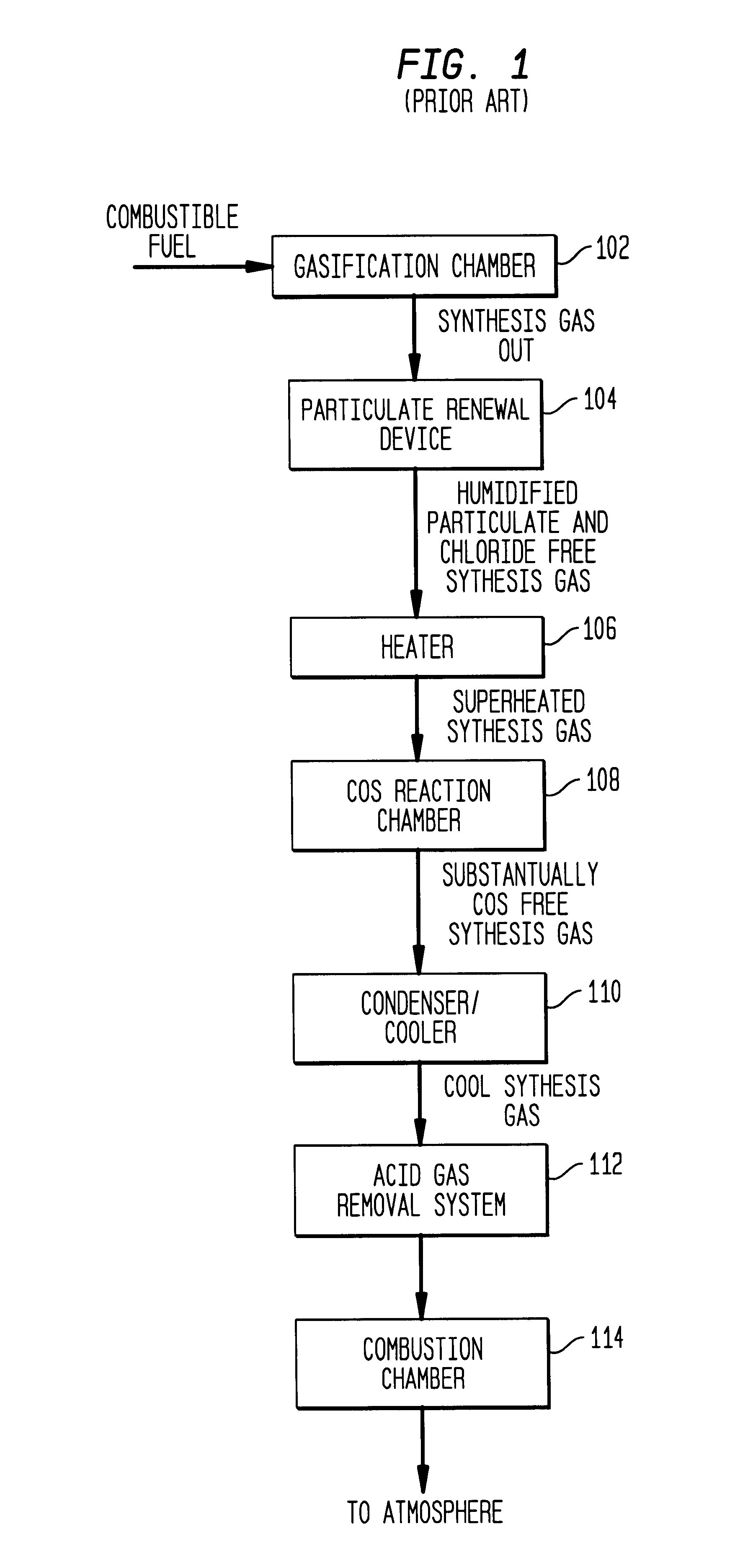Method and apparatus for removing carbonyl sulfide from a gas stream via wet scrubbing
a technology of carbonyl sulfide and gas stream, which is applied in the direction of combustible gas purification/modification, hydrogen separation using liquid contact, and separation process, etc., can solve the problem that the sulfur compound subject to output limitations through regulation is sulfur dioxide, and the acid gas removal system is not effective in removing carbonyl sulfid
- Summary
- Abstract
- Description
- Claims
- Application Information
AI Technical Summary
Benefits of technology
Problems solved by technology
Method used
Image
Examples
Embodiment Construction
The following example is presented to further illustrate and explain the present invention and should not be taken as limiting in this regard. This example summarizes the results of tests performed using a synthesis gas treatment system having a conventional wet scrubber similar to the one illustrated in FIGS. 2-4. The wet scrubber in this case actually comprised two parallel wet scrubbers, each receiving approximately one-half of the synthesis gas stream.
Typically, each scrubber is operated having a water level line approximately 42 inches above the base of the scrubber. The total COS concentration in the synthesis gas stream at the output of both scrubbers is in the range of 320 ppm.
When the water level of one of the scrubbers was raised to a relatively high level, approximately 55-60 inches (e.g., the scrubber was flooded), the concentration of COS in the synthesis gas stream fell to about 270 ppm. This represents about a 16% reduction in the amount of COS in the synthesis gas st...
PUM
| Property | Measurement | Unit |
|---|---|---|
| Level | aaaaa | aaaaa |
Abstract
Description
Claims
Application Information
 Login to View More
Login to View More - R&D
- Intellectual Property
- Life Sciences
- Materials
- Tech Scout
- Unparalleled Data Quality
- Higher Quality Content
- 60% Fewer Hallucinations
Browse by: Latest US Patents, China's latest patents, Technical Efficacy Thesaurus, Application Domain, Technology Topic, Popular Technical Reports.
© 2025 PatSnap. All rights reserved.Legal|Privacy policy|Modern Slavery Act Transparency Statement|Sitemap|About US| Contact US: help@patsnap.com



